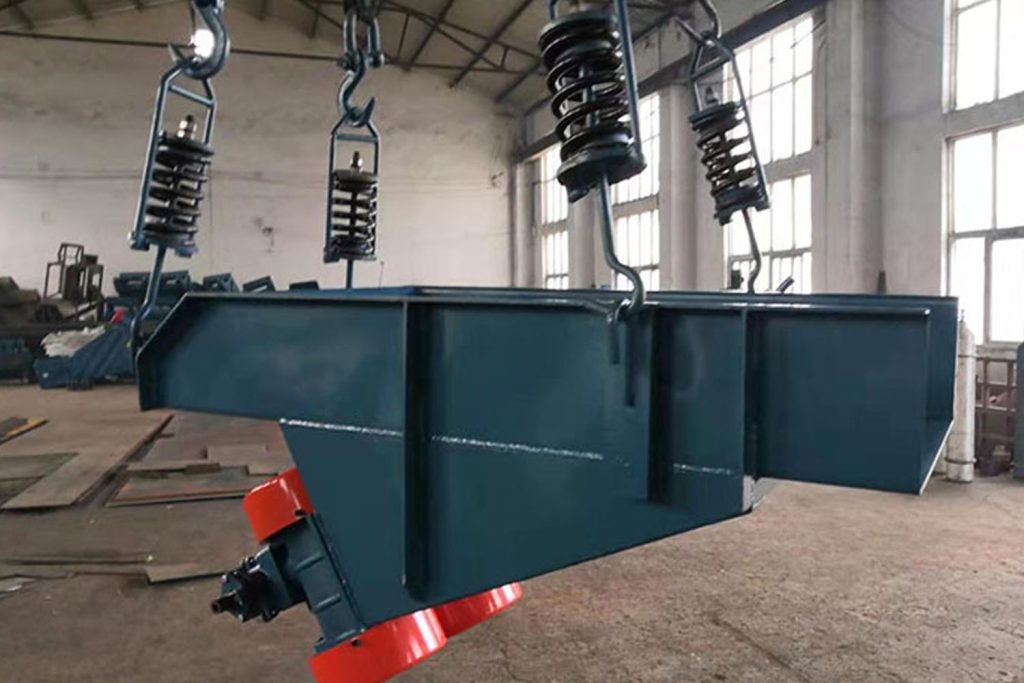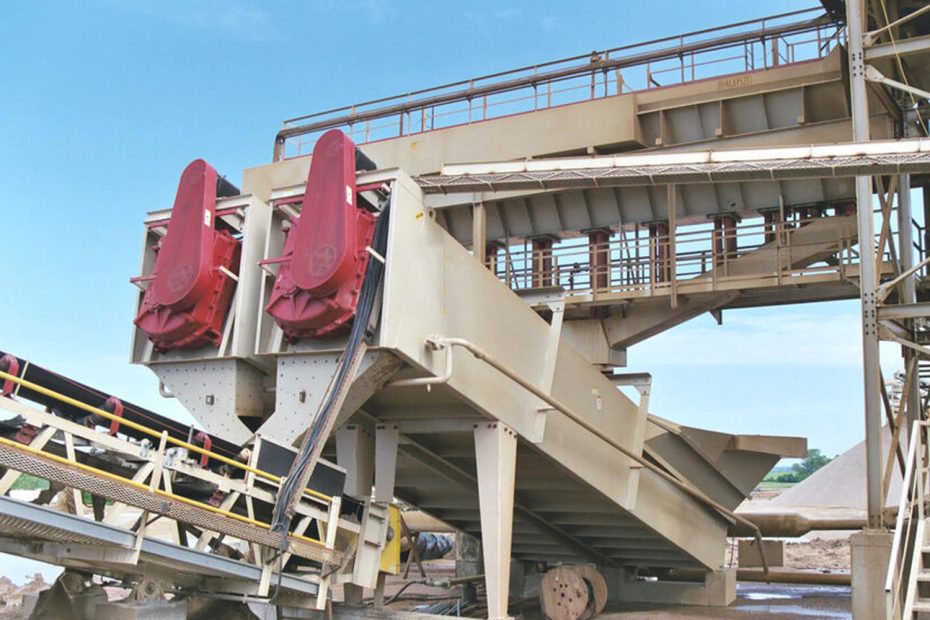vibrating feeder uses the rotation of the eccentric block in the vibrator to generate centrifugal force, so that the movable parts such as the screen box and vibrator make forced continuous circular or quasi-circular motion. The motor drives the active shaft through the V-belt, and then the gear on the active shaft meshes with the passive shaft to rotate. The active and passive shafts rotate in opposite directions at the same time, so that the trough body vibrates and the material flows continuously to achieve the purpose of conveying materials.
During the use of the vibrating feeder, the amplitude and current stability of the feeder must be checked frequently. If the leaf spring tightening bolt is found to be loose, the leaf spring is broken, the air gap between the iron core and the armature changes, or a collision occurs, it must be handled immediately.

Four major issues that need to be paid attention to when using a vibrating feeder
- When using a vibrating feeder , the current must not be increased at will, because excessive amplitude will cause the plate spring to break or shorten the service life of the plate spring;
- The stability and reliability of the equipment operation depends to a large extent on the tightness of the plate spring clamping bolt and the electromagnet working air gap adjustment bolt. Therefore, in the initial stage of equipment operation, attention should be paid to checking and tightening;
- Regularly check whether the working air gap between the electromagnet and the armature has changed, especially after re-tightening the clamping bolt of the plate spring. At the same time, pay attention to whether there is iron and debris in the air gap. If there is iron and debris,
- The power supply voltage fluctuation should not be too large. The voltage is only allowed to change within the range of 5%, because the change of the power supply voltage will directly cause a significant change in the amplitude.
Conclusion
The vibrating feeder is a device that uses the principle of vibration to feed materials. It has a series of advantages such as high output, low energy consumption, small size, simple structure, easy maintenance and repair, and easy automatic control. It is currently widely used in mining, metallurgy, machinery manufacturing, coal, chemical industry, building materials, food, light industry and other departments.
